Lighthouse Birds
Patuxent Bird Identification InfoCenter
Cornell Merlin
All links and info below from Wikipedia
As seen at the Point Pinos Lighthouse
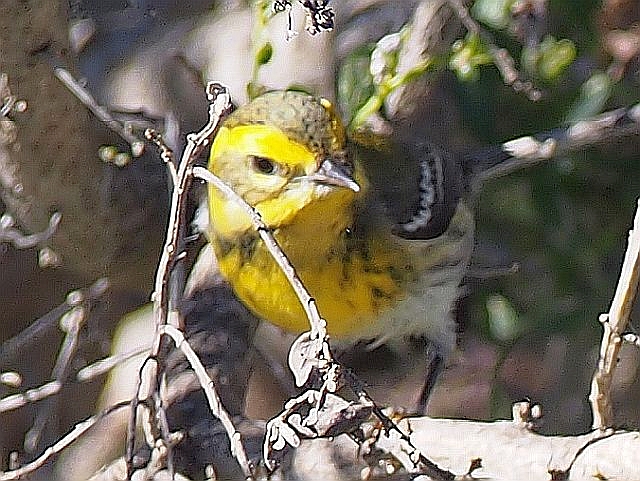
Townsend's Warbler Their breeding habitats are coniferous forests with large trees on the northwestern coast of North America. Their nests are shallow cups built with grass and lined with moss. These nests are usually placed atop a branch in a conifer. The female lays 4 to 5 brown-speckled white eggs. They forage actively in the higher branches, often gleaning insects from foliage and sometimes hovering or catching insects in flight. They mainly eat insects and spiders and seeds.
Likely a juvenile or female in the image.
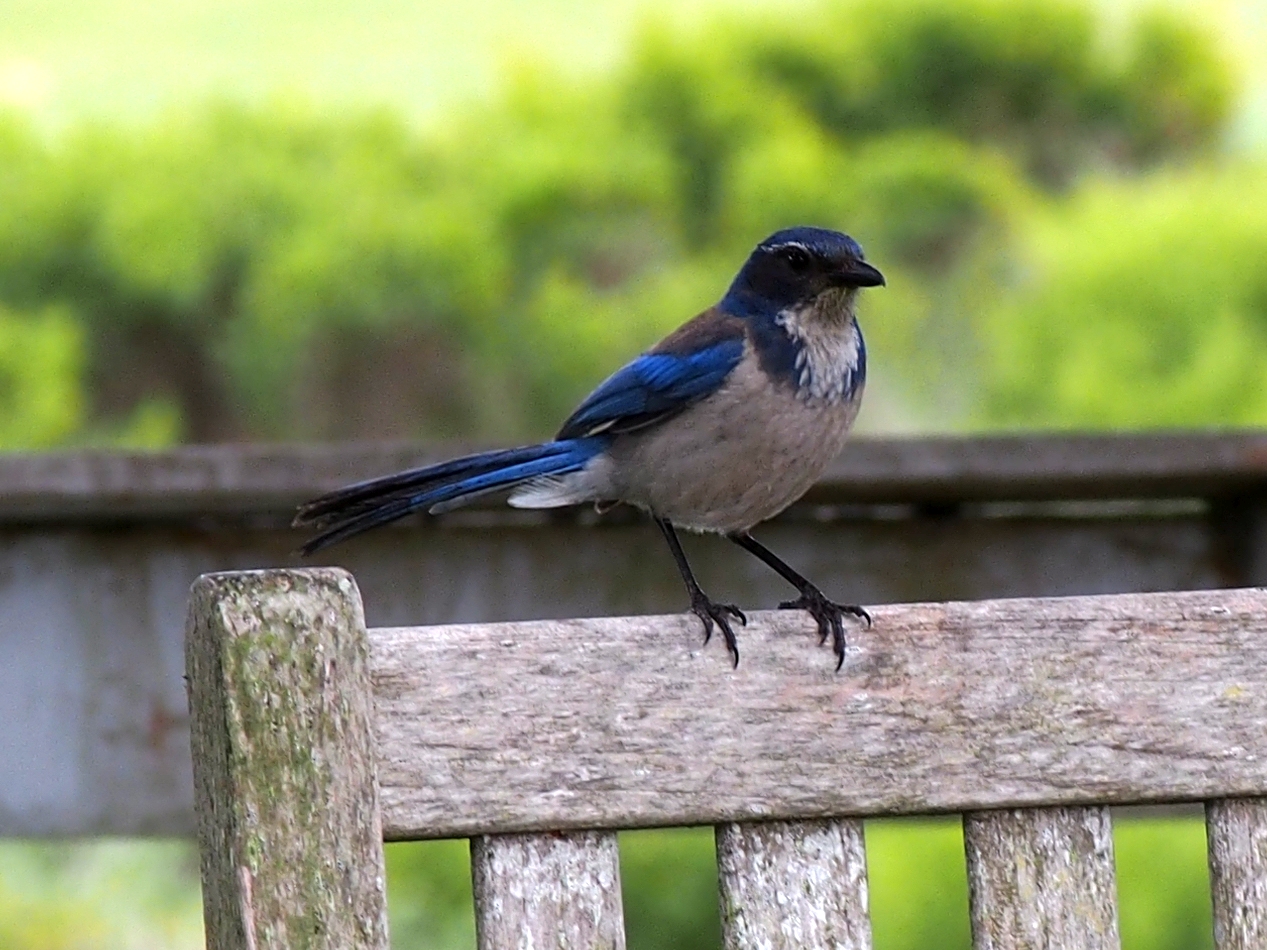
California scrub jay The diet consists mainly of acorns and pine nuts. However, grain, berries, and other fruits are often eaten as well. These birds can also be omnivorous; their diet can include insects, eggs and nestlings, small frogs, mice, and reptiles. As food-storing birds, the scrub jays demonstrate a unique episodic memory. They can find their food hiding places with great precision, even several days after the initial cache.

American crow Studying the behavior of American crows is laborious due to the difficulty in catching them to band them, let alone catching them again. Thus much of their behavior, including daily routine, migration, molting, survivorship, age of first breeding, nestling development, and the nature of nesting helpers, remains poorly studied.
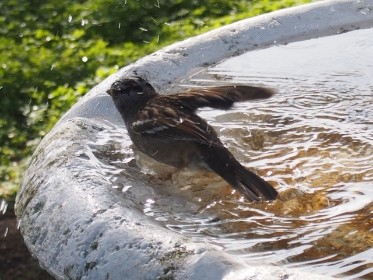
Common Sparrow The song sparrow (Melospiza melodia) is a medium-sized New World sparrow. Among the native sparrows in North America, it is easily one of the most abundant, variable and adaptable species.

House Finch The house finch (Haemorhous mexicanus) is a bird in the finch family Fringillidae. It is native to western North America and has been introduced to the eastern half of the continent and Hawaii. This species and the other "American rosefinches" are placed in the genus Haemorhous.

Turkey Vulture The turkey vulture (Cathartes aura), also known in some North American regions as the turkey buzzard (or just buzzard), and in some areas of the Caribbean as the John crow or carrion crow, is the most widespread of the New World vultures. One of three species in the genus Cathartes of the family Cathartidae, the turkey vulture ranges from southern Canada to the southernmost tip of South America. It inhabits a variety of open and semi-open areas, including subtropical forests, shrublands, pastures, and deserts. Often seen at mountain lion kills (deer and seals).

Anna's hummingbird (Calypte anna) is a medium-sized bird species of the family Trochilidae. It was named after Anna Masséna, Duchess of Rivoli. It is native to western coastal regions of North America. In the early 20th century, Anna's hummingbirds bred only in northern Baja California and southern California. The transplanting of exotic ornamental plants in residential areas throughout the Pacific coast and inland deserts provided expanded nectar and nesting sites, allowing the species to expand its breeding range. Year-round residence of Anna's hummingbirds in the Pacific Northwest is an example of ecological release dependent on acclimation to colder winter temperatures, introduced plants, and human provision of nectar feeders during winter.
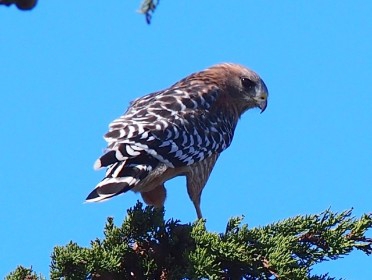
Red-Shouldered Hawk The red-shouldered hawk (Buteo lineatus) is a medium-sized hawk. Its breeding range spans eastern North America and along the coast of California and northern to northeastern-central Mexico. It is a permanent resident throughout most of its range, though northern birds do migrate, mostly to central Mexico. The main conservation threat to the widespread species is deforestation.
We have a nesting pair that has returned this year after successfully fledging young last year.
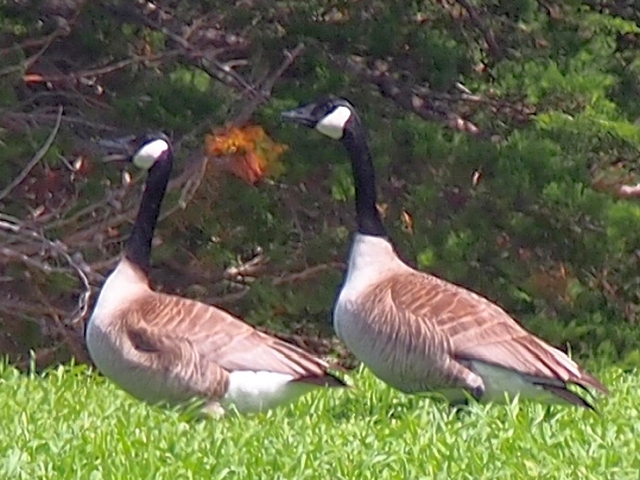
Canada Goose The Canada goose (Branta canadensis), or Canadian goose, is a large wild goose with a black head and neck, white cheeks, white under its chin, and a brown body. It is native to the arctic and temperate regions of North America, and it is occasionally found during migration across the Atlantic in northern Europe. It has been introduced to the United Kingdom, Ireland, Finland, Sweden, Denmark, New Zealand, Japan, Chile, Argentina, and the Falkland Islands. Like most geese, the Canada goose is primarily herbivorous and normally migratory; it tends to be found on or close to fresh water.
Our resident geese no longer migrate, but are here year-round. Each adult size goose puts out a pound of 'poo' a day that creates quite a slippery safety hazard, especially when in 'flock' numbers.

Great Blue Heron The great blue heron (Ardea herodias) is a large wading bird in the heron family Ardeidae, common near the shores of open water and in wetlands over most of North America and Central America, as well as the Caribbean and the Galápagos Islands. It is a rare vagrant to coastal Spain, the Azores, and areas of far southern Europe. An all-white population found in south Florida and the Florida Keys is known as the great white heron. Debate exists about whether this represents a white color morph of the great blue heron, a subspecies of it, or an entirely separate species. The status of white individuals known to occur elsewhere in the Caribbean, and their existence is rarely found elsewhere besides in eastern North America. (they love to eat gophers too)
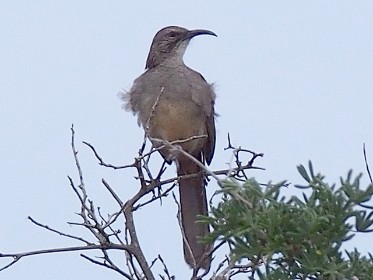
California Thrasher The California thrasher (Toxostoma redivivum) is a large member of family mimidae found primarily in chaparral habitat in California and Baja California. It is the only species of Toxostoma throughout most of its range
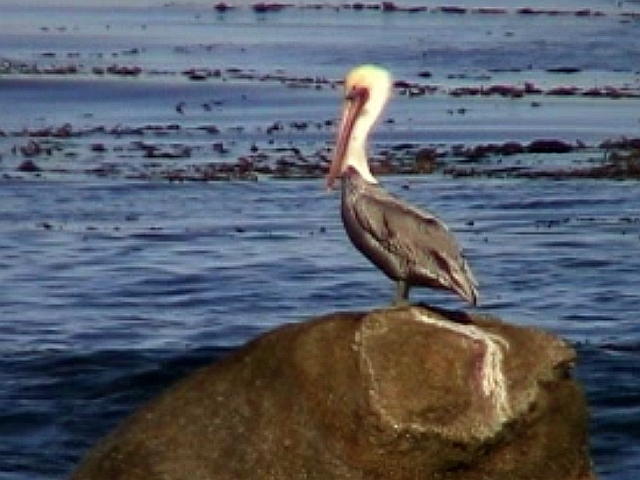
Brown Pelican The brown pelican mainly feeds on fish, but occasionally eats amphibians, crustaceans, and the eggs and nestlings of birds. It nests in colonies in secluded areas, often on islands, vegetated land among sand dunes, thickets of shrubs and trees, and mangroves.
We see them from the lighthouse when they fly in formation along the shoreline.
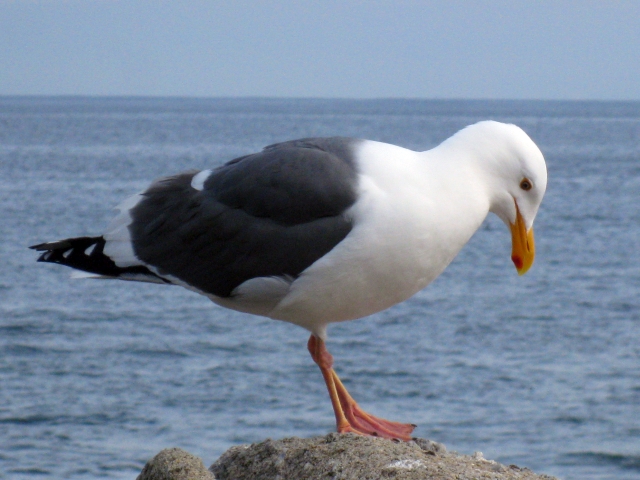
Western Gull* Western gulls feed in pelagic environments and in intertidal environments. At sea, they take fish and invertebrates like krill, squid and jellyfish. They are unable to dive and feed exclusively on the surface of the water. On land they feed on seal and sea lion carcasses and roadkill, as well as cockles, starfish, limpets and snails in the intertidal zone. They also feed on human food refuse, in human-altered habitats including landfills, and take food given to them, or stolen from people at marinas, beaches and parks. Western gulls are known to be predatory, killing and eating the young of other birds, especially ducklings, and even the adults of some smaller bird species.
We rarely see them on the lighthouse grounds, but are very common along the shore and in city proper.
Also seen at Point Pinos Lighthouse, but not imaged yet: Common Starling, Acorn Woodpecker*, Dark-eyed Junco, Steller's Jay*, Great Egret, Black Phoebe, Western Tanager summer for breeding,
The Monterey Peninsula is on the major migratory path for a many bird species. One of the best places to see shore birds.
* These local birds will learn to beg from you. DO NOT FEED. They are wild birds that need to remain wild to play their part in our local eco system.
